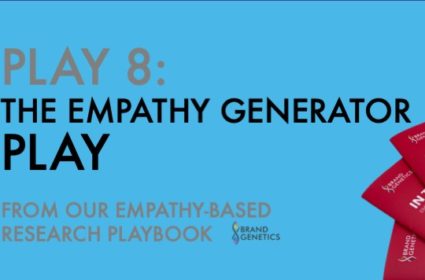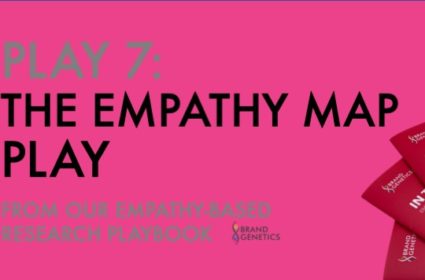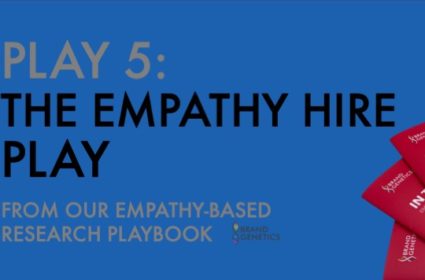Empathy-Based Research: The Empathy Interview Play

This article is part of our series on Empathy- based Research. You can view the full series or download the report.
Download ReportThis week we highlight how using interviews can fuel business success, with play 6 from our brand-new Empathy Playbook.
As a reminder, as innovation and research become increasingly dominated by quantitative data analytics and algorithms, market researchers need empathy more than ever to see the humans behind the numbers. Empathy is our ability to see and feel things from someone else’s perspective, and the key benefit is that it generates emotional insight into the feelings, motivations and needs that drive behaviour.
As a result, we’ve put together this playbook of practical empathy-based activities to help you research and innovate better from a consumer perspective.
Play 6: The Empathy Interview Play
When you need the play:
The empathy interview play is a semi-structured individual in-depth interview (IDI in market research speak) conducted face-to-face, in which the interviewer uses probes, prompts and their own empathy to generate emotional insight into how someone feels in a particular situation.
The empathy interview play works well prior to ideation or quantitative research. The immersion can provide a rich source of creative stimulus and emotional insight to build on or to investigate. Research has found that only 7% of emotional content is expressed through the words we use (the so-called 7% rule). Thus, the face-to-face situation of the empathy interview play allows you to pick up on important non-verbal body language and better project yourself into the shoes of another.
How it works:
If you want to understand how someone else feels, talk with them about their feelings. With its roots in the empathic listening approach of psychologist Dr Carl Rogers, this play involves listening closely as the interviewee offers a detailed walk-through of a recent experience, focusing on how they felt, ultimately generating an “emotional walk-through”.
There are multiple ways to run an empathy interview, but it can be helpful to use best practice tips for “IPA” interviews (not an interview over an IPA beer, but using the increasingly popular qualitative technique known as Interpretive Phenomenological Analysis, that focuses on bringing to life a past “lived experience”). The goal is to structure the interview around a “lived experience”, asking the interviewee to describe their experience in detail from start to finish, bringing it to life with their subjective meanings, feelings and sense-making.
- Choose a private and safe space to conduct the interview. If it’s possible to use the space where the original experience occurred, that’s ideal
- Don’t rush in; take time to put the interviewee at ease; ask them to tell you about a recent experience they have had in their own words
- Consider asking them to come to the interview with an object, photo or memory that reminds them of their experience
- Capture the basics: what, when, where, how, why and who with
- Be flexible – allow the interviewee to guide the interview and focus on what mattered to them
- Body language – monitor non-verbal behaviour, pay attention to the language they use to describe their feelings, how they make sense of their feelings, and what was going on
- List and record – focus on listening and record the interview for later analysis, with their consent. If the interview takes place in situ, and you have permission, take pictures and video
After getting a general overview, take them back to the beginning of the experience and ask them to walk you through it step by step from start to finish. Listen, but use prompts and probes to explore their emotional journey.
At each step or moment, ask questions such as, “right then, how were you feeling”, “what was going on that made you feel this way”? Sense-check by playing back what you hear (“So you felt…[emotion] then because… [personal understanding]?”)
Probe to understand key drivers of their emotional state. For example, explore the differences between their expectations and experience or their goals, and whether these were being frustrated or facilitated.
When you’re done interviewing, then it’s about standard qualitative (IPA) analysis. So, first transcribe the interview into the right-hand column of a two-column document. Then use the left-hand column for analysis, beginning with free text analysis to identify, connect, cluster and finally tabulate emergent themes. Then, write your analysis up as an individual case study with supporting media and verbatims. The simple goal is to create a real-life case study that is rich in emotional insight and that brings to life what it felt like to be the individual experiencing the “lived experience”.




